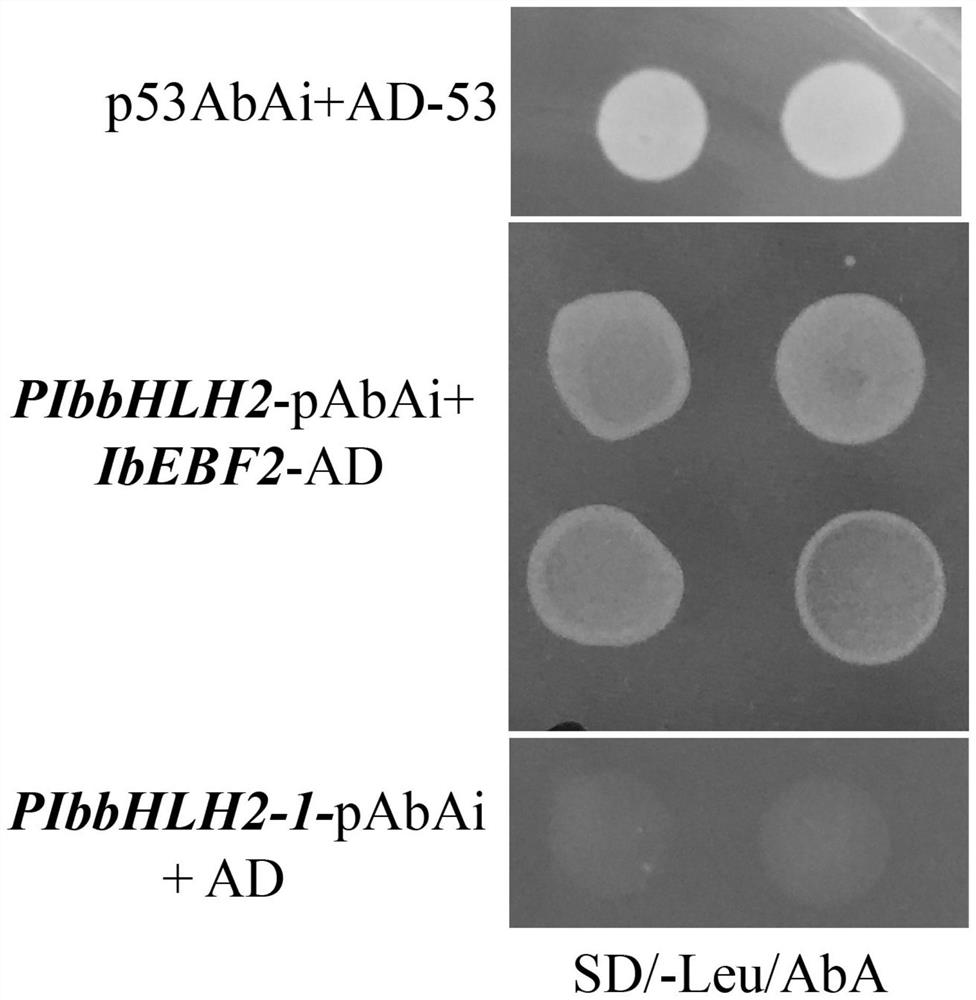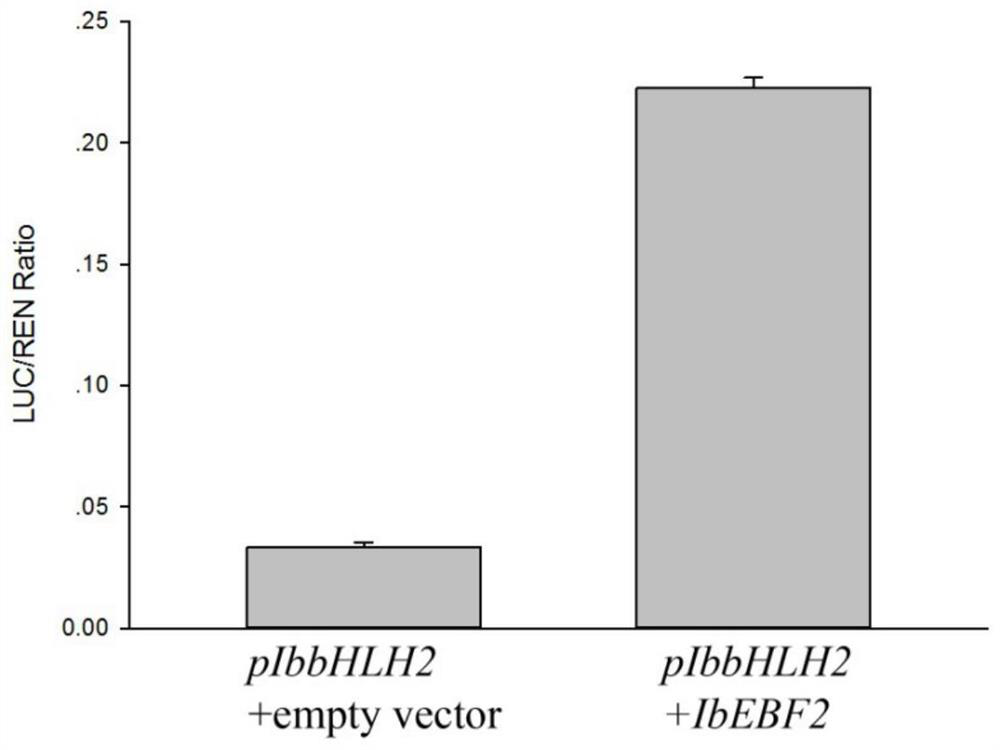Upstream regulatory factor IbEBF2 and application thereof in regulating IbbHLH2 expression of purple sweet potatoes
A regulatory factor, purple-heart sweet potato technology, applied in application, genetic engineering, plant gene improvement, etc., can solve problems such as differences in anthocyanin regulation modes
- Summary
- Abstract
- Description
- Claims
- Application Information
AI Technical Summary
Problems solved by technology
Method used
Image
Examples
Embodiment 1
[0035] Example 1: Construction of purple-heart sweet potato yeast one-hybrid cDNA library
[0036] (1) RNA was extracted from the roots of purple sweet potato (line A5) by Trizol method, and double-stranded cDNA was synthesized by reverse transcription by SMART technology.
[0037] (2) The amplified cDNA should be purified with TaKaRa MiniBEST DNA Fragment Purification Kit, so that dH 2 O dissolution.
[0038] (3) The cDNA digested with the restriction endonuclease SfiI is subjected to column treatment, and then purified by PCI / CI to finally make the ddH 2 O dissolution.
[0039] (4) The pGADT7-SfiI vector (clontech, Cat. No. 630490) was ligated with an appropriate amount of cDNA after passing through the column with a DNAligation Kit. Purify the refined connection solution to obtain the primary cDNA library.
[0040] (5) Transfer a small amount of the primary library ligation solution into the competent cell E.coli HST08 by electroporation; after the identification is cor...
Embodiment 2
[0042] Example 2: Construction of pAbAi-PIbbHLH2 bait vector
[0043] (1) Using purple sweet potato tuber DNA as a template, using TaKaRa high-fidelity enzyme Max DNAPolymerase amplifies the IbbHLH2 promoter DNA fragment with different restriction sites at both ends, and the PCR primer pair for amplifying the IbbHLH2 promoter DNA fragment is PIbbHLH2-F: 5'-TCCTAGCCAAGAAGAGTGGAGAGA-3' and PIbbHLH2 -R: 5'-TCTCATACCACCACACCCTAGTGG-3'. The reaction system (20μL) is as follows:
[0044]
[0045] The PCR reaction conditions are:
[0046]
[0047]
[0048] (2) Construct the promoter IbbHLH2 (sequence shown in SEQ ID NO.3) into the pAbAi vector (Ke Lei Biotechnology Co., Ltd., product number kl-zl-0879), the steps are: use TaKaRa restriction enzyme QuickCut TM Hind III and QuickCut TM Sma Ⅰ double-digested the pAbAi plasmid, and the synthetic primer sequence was shown in Table 2 as Pb2F / Pb2R. The reaction conditions were 37°C, and the enzyme digestion was over 3 hours....
Embodiment 3
[0069] Example 3: Detection of self-activation of pAbAi-PIbbHLH2 bait strain
[0070] The pAbAi-PIbbHLH2 bait plasmid was transformed into Y1H yeast to obtain the bait strain. Use the self-activation test to test the minimum AbA concentration that inhibits the bait strains, and observe their growth on the SD / -Ura solid medium. The method for determining the self-activation detection and minimum AbA concentration of the bait strains is as follows:
[0071] (1) Preparation of AbA mother solution: 1 mg AbA was dissolved in 1 mL of absolute ethanol to prepare 1 mg / mL AbA mother solution, and stored at 4°C in the dark.
[0072] (2) Pick larger monoclonal colonies from the culture dishes of Y1H[pAbAi-prey] and Y1H[p53AbAi], resuspend the bacterial solution with 10 μL of 0.9% NaCl solution, and dilute the resuspended solution to 10 -1 、10 -2 and 10 -3 Concentration gradient.
[0073] (3) Pipette 10 μL of the resuspended bacteria and spot on SD / -Ura, SD / -Ura / AbA (100ng / mL~1000ng / m...
PUM
 Login to View More
Login to View More Abstract
Description
Claims
Application Information
 Login to View More
Login to View More - R&D
- Intellectual Property
- Life Sciences
- Materials
- Tech Scout
- Unparalleled Data Quality
- Higher Quality Content
- 60% Fewer Hallucinations
Browse by: Latest US Patents, China's latest patents, Technical Efficacy Thesaurus, Application Domain, Technology Topic, Popular Technical Reports.
© 2025 PatSnap. All rights reserved.Legal|Privacy policy|Modern Slavery Act Transparency Statement|Sitemap|About US| Contact US: help@patsnap.com



